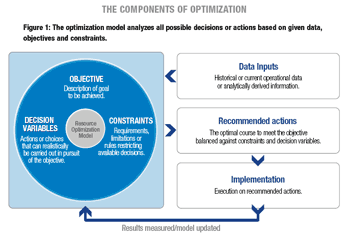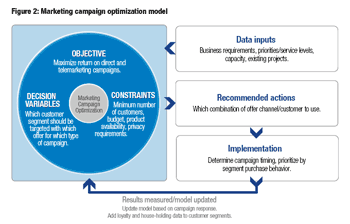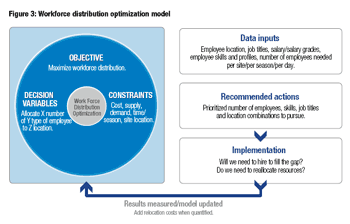Leadership Inspirations – Steps to Effectiveness

- Show up ready to affect change,
- Give you best to the team’s success, and
- Set the standard for excellence!
Howard Dickens Jr.

Howard Dickens Jr.
So much time is spent on trying to get more traffic and all of that can be pointless if the user experience is poor once they reach your site. You have a split second to give users a sense of who you are. When a user comes to your site, the enemy is ‘Frustration’ so think about the blockers, think about the experience, and think about implementing these 10 simple but effective conversion techniques.
Hi there! This article is available for free. Login or register as a StrategyDriven Personal Business Advisor Self-Guided Client by:
Subscribing to the Self Guided Program - It's Free!
About the Authors

As the director of SEO at Everspark, Hennessey oversees search marketing campaigns for high profile celebrities, lawyers, politicians and Fortune 500 companies. Within the industry he is known as ‘The Secret Weapon‘ people call on when they want to rank for extremely competitive terms in short periods of time. Jason played an instrumental role in turning Everspark Interactive into a $1.2 million agency in only three months.

In January 2010, he partnered with three colleagues to create a full-service SEO agency called Everspark Interactive. With Chris’s extensive background and creative vision, he has helped grow Everspark Interactive into a $1.2 million company in just three months; making it one of Atlanta’s fastest growing new companies.
Innovation is the introduction of new things or methods and is the life blood of business today. Innovative companies realize remarkable marketplace rewards. The challenge before leaders is how to inspire their workforce to use the full measure of their creative power to advance the organization in new and better ways.
The Business of Innovation is a five part series created by CNBC in association with IBM. Within each episode, Maria Bartiromo and a distinguished panel of guests discuss what it takes to be an innovation leader.
A catalog retailer wants to better manage its call centers, direct mail and e-mail channels. The millions of customers in its database represent the gamut of buying histories, buying propensities, profitability, demographics and cost to serve. Given capacity and costs for each channel, which customers should receive which offers through which channels? What will happen if you add a channel, trim budget for another or initiate a new contact policy?
A financial institution is completing an acquisition and needs to reallocate personnel across its existing branches. Given the skills, location and mobility of this work force, how should these resources be allocated most effectively?
In each case the answer is it depends. The best way to allocate resources depends on the nature of the resources, the constraints at hand and the organization’s mission.
Optimization involves designing a system or process to be as good as possible in some defined sense. Of course, it’s the “defined sense” that makes things murky. What’s optimal for you – with your goals and values – could very well be suboptimal for the next person. Every performance management paradigm, every mission statement, could point to a different definition of success – and therefore to a different way to “optimally” allocate resources.
How do you optimize resources in poorly defined decision-making environments – or in cases where scenarios are well-defined or ineffective? Effective resource optimization requires a certain rigor, consistency and agreement on processes. Whether you are developing a mathematical optimization or just trying to drive more effective and efficient use of resources across the organization, the resource optimization model should be based on the objective, decision variables and constraints.
Within this framework the purpose is to maximize or minimize, as appropriate, the performance metric in the objective by assigning values to the decision variables that satisfy the constraints. The following five steps can help you make the most of this optimization framework.

The resource optimization model must reflect not only the well-defined, often narrow departmental objectives but also the objectives that are most important to the organization as a whole. There also needs to be an understanding of how activities will support these objectives, and how success or failure will be measured.
Step 2. Get executive buy-in and foster accountability
It’s not enough for executives to agree on the goals, business rules and constraints, and decisions that will be made. Putting the “best” choice for each decision variable into action requires accountability and commitment from implementers and executives.

To define the model, you first need to determine what input data is available. The cleaner and more accurate the data, the better. The more historical depth and relevance, the better. Next, identify variables that can actually be changed and decisions that can realistically be made in this organization within the given time frame.
Step 4. Formulate the resource optimization model
This step is the translation of your conceptual model into an analytic model with more rigor and detail, represented in mathematical terms. In this step you begin to formally code the key elements of the optimization model – objective, constraints and decision variables. There is no single “right” way to use mathematical expressions to represent the elements of a decision problem. Every formulation represents a compromise because no mathematical representation can reflect every detail of a real-world scenario. Good modeling balances realism and workability.

Using analytical software such as SAS, build and implement the model. Its output can provide recommendations as to the best values of the decision variables to support the objective, given the constraints and data available.
Test the optimization model for suitability. Training and experience will help you to choose the best model. It’s important to understand how well the model works in the real world and to incorporate the knowledge from previous versions of the model into future ones.
Analytical models must be validated and continually updated. Best practices for resource optimization are tied to
performance management by answering questions such as: “Were recommended decisions put into action?” and “Were those decisions effective in driving improved alignment with organizational goals?” If the results were not what you would expect, revisit the model to determine whether objectives, decisions, constraints, resources and other elements are properly identified to reflect your current reality.
Commit to resource optimization
Changing conditions will warrant corresponding changes in your resource optimization models. Periodically cycling through this five-step process will help organizations highlight areas to improve as they update their models to generate insights that continue to be relevant and valuable. A commitment to resource optimization will help to ensure that your organization remains focused and productive in an ever-changing competitive environment.
This article was republished with the permission of sascom Magazine.
About the Authors




Hi there! Gain access to this article with a StrategyDriven Insights Library – Total Access subscription or buy access to the article itself.
| Subscribe to the StrategyDriven Insights Library
Sign-up now for your StrategyDriven Insights Library – Total Access subscription for as low as $15 / month (paid annually). Not sure? Click here to learn more. |
Buy the Article
Don’t need a subscription? Buy access to Decision-Making Best Practice 12 – Diverse, Redundant Data Sources for just $2! |
